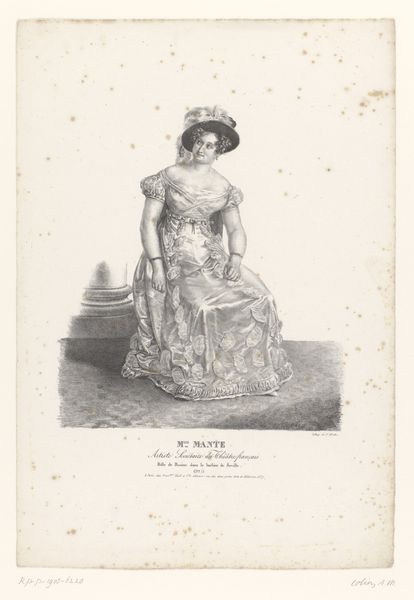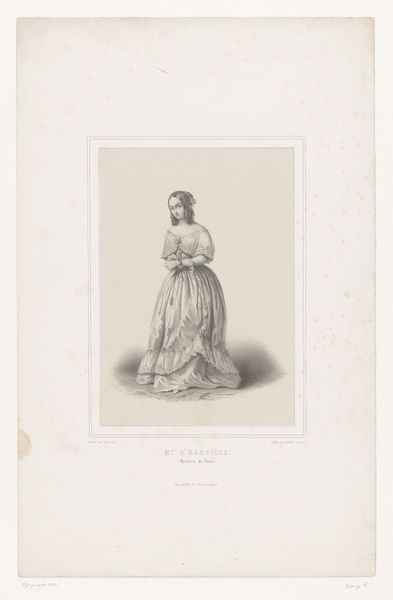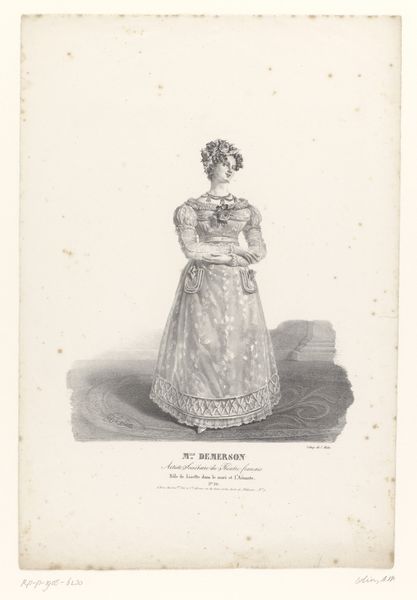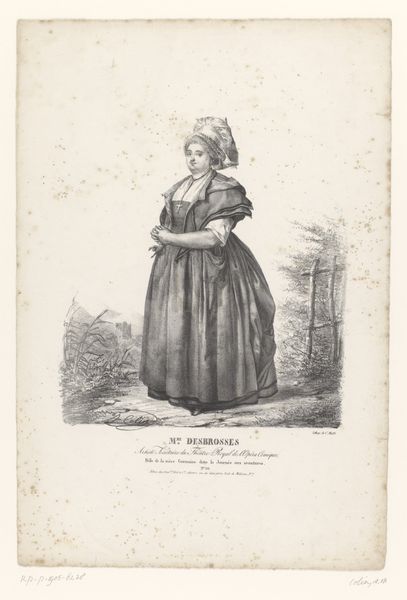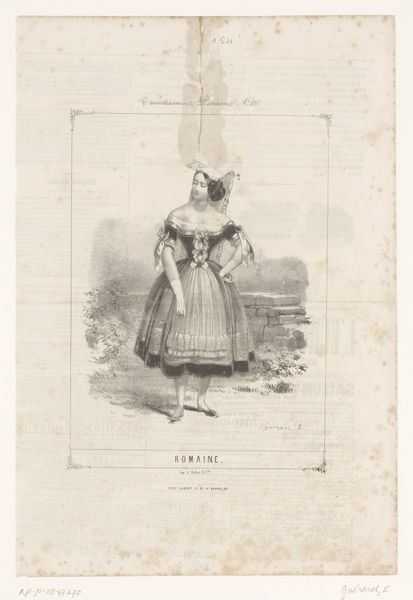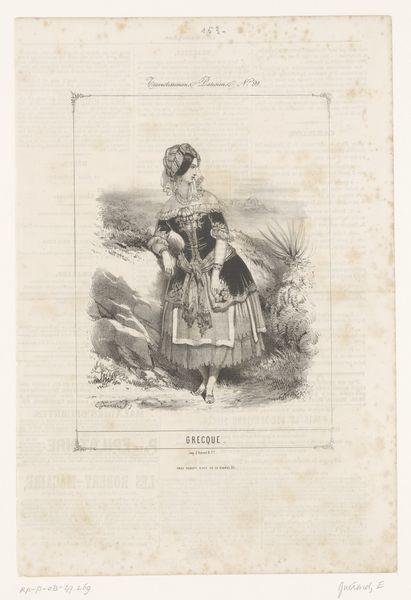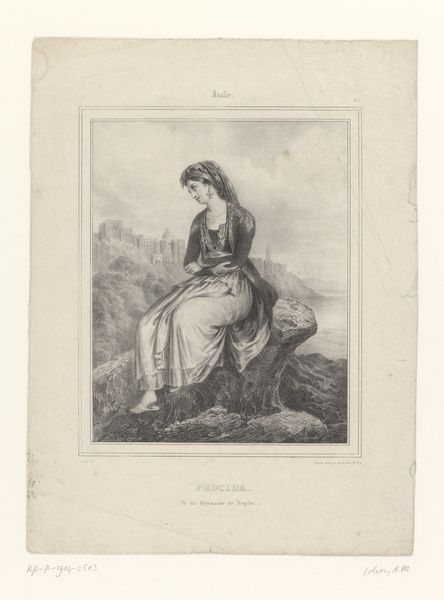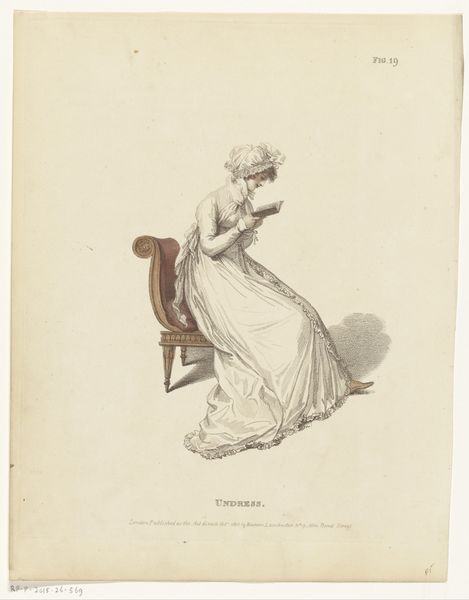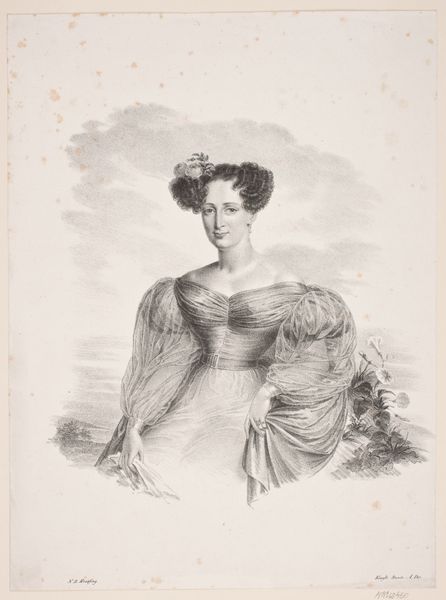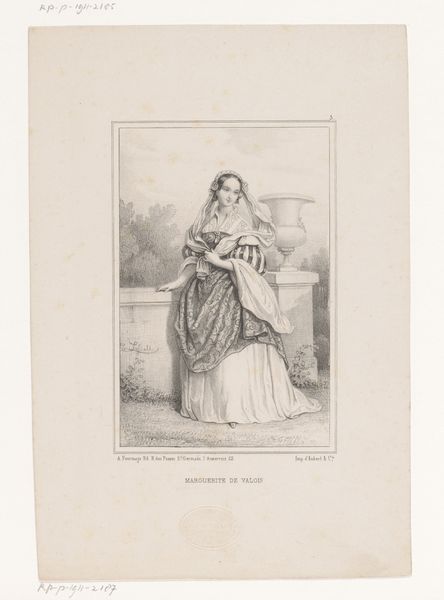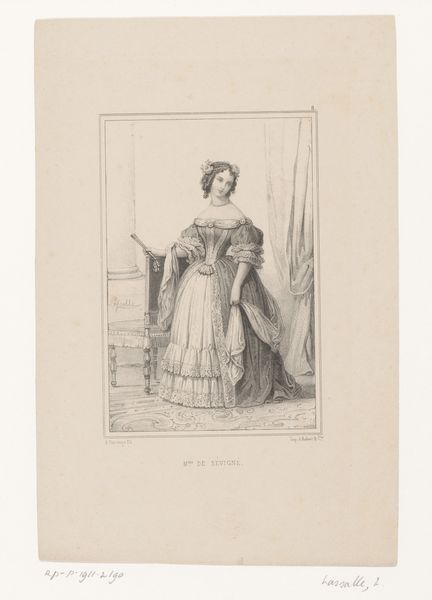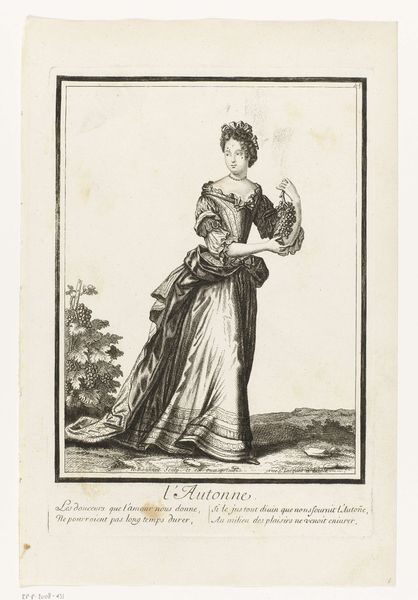
Portret van mademoiselle Clara-Stéphany als Célanie in de vaudeville L'Île des Noirs 1823
0:00
0:00
drawing, pencil
#
portrait
#
drawing
#
romanticism
#
pencil
#
genre-painting
Dimensions: height 421 mm, width 287 mm
Copyright: Rijks Museum: Open Domain
Editor: This is Alexandre-Marie Colin’s “Portrait of Mademoiselle Clara-Stéphany as Célanie in the vaudeville L'Île des Noirs," from 1823, rendered in pencil. The texture is stunningly delicate, and there's a quiet stillness about the piece. What do you see when you look at it? Curator: Initially, the interplay between line and shadow strikes me. Notice how Colin uses hatching and cross-hatching to define the volume of Clara-Stéphany's dress and the rock she sits upon. The texture created through the variation of pencil strokes. Editor: It’s amazing how he achieves such a luminous effect with just pencil! The way the fabric drapes seems so realistic. Curator: Indeed. Consider how the dress’s texture contrasts against the smoothness of her face and hands. What purpose might this intentional disruption serve in our comprehension of form? It brings the figure into focus in comparison to the relative environment around the sitter. Editor: I guess it guides your eye right to her… and highlights her status, maybe? Curator: Perhaps. Notice the simplicity of the landscape, and the composition's dependence on contrasts of light and shade and, the subject is captured against this backdrop in a structured configuration with careful control of linear details that create visual form to the extent they appear to the eye. Editor: It's fascinating to see how much can be conveyed through such a restrained medium. Curator: Absolutely. It underscores the artist's mastery of form and the emotive potential embedded within compositional elements. This approach moves beyond mere representation. I find this a great case for Romantic era artwork. Editor: That's a fantastic way to look at it. I hadn't considered it in terms of its intrinsic form rather than solely representation. Thanks!
Comments
No comments
Be the first to comment and join the conversation on the ultimate creative platform.
